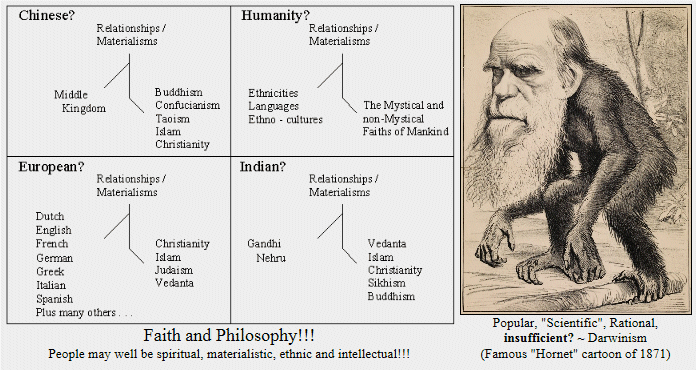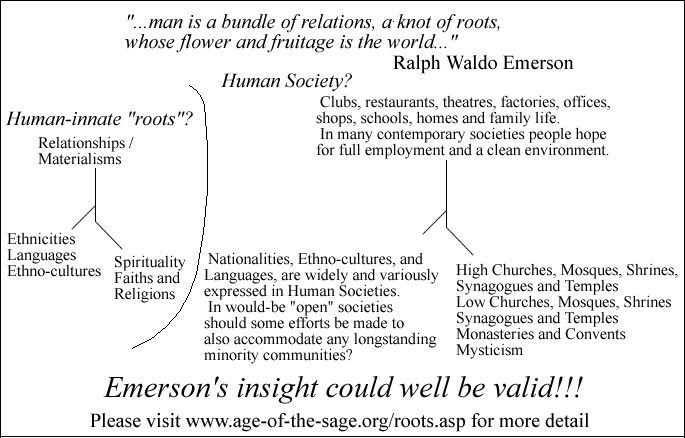Thomas, Chess & Birch ~
human personality traits
The study, conducted amongst young children, in its early days had such persons as Alexander Thomas, Stella Chess, Herbert G. Birch and Margaret Hertzig as principal contributors.
The New York Longitudinal Study investigations included direct observation and also interviews with parents about their children.
The team came up with ways of investigating individual styles of personality and temperament amongst children and discovered ways of identifying and giving a relevant rating to nine separate "qualities" associated with personality and temperament.
In analysing their data, the nine characteristics that were identified by the team as being reliably scorable on a three-point scale (medium, high and low) were:-
- the level and extent of motor
activity;
- the rhythmicity, or degree of regularity,
of functions such as eating, elimination and the cycle of sleeping and
wakefulness;
- the response to a new object or person,
in terms of whether the child accepts the new experience or withdraws from
it;
- the adaptability of behavior to changes
in the environment;
- the threshold, or sensitivity, to
stimuli;
- the intensity, or energy level, of
responses;
- the child's general mood or
"disposition", whether cheerful or given to crying, pleasant or cranky,
friendly or unfriendly;
- the degree of the child's distractibility
from what he is doing;
- the span of the child's attention and his
persistence in an activity.
When the researchers analysed the behavioural profiles of the children in an endeavour to find correlations among the nine individual characteristics, they found that certain attributes did seem to cluster together. This clustering seemed to point toward the definition of three general types of temperament (although quite a few of the children did not easily fit into any of these three "types").
- The "easy children"
- This type - approximately forty per cent of the 141 children in the
total sample were placed in this category - was held to be characterised by positiveness
in mood, regularity in bodily functions, a low or moderated intensity of
reaction, adaptability and positive approach to, rather than withdrawal from,
new situations.
In infancy these children seemed to quickly establish regular sleeping and feeding schedules, were generally cheerful and adapted quickly to new routines, new food and new people. As they grew older they learned the rules of new games quickly, participated readily in new activities and adapted easily to school. This group was called the "easy children", because they presented so few problems in care and training.
- The "difficult children"
- Another set of characteristics such as irregular in bodily functions, usual intensity in
reactions, tendency to withdraw in the face of new stimuli, relative slowness to adapt to
changes in the environment and general negativity in mood was deemed by the reseachers to
be associable with another group that they labelled "difficult children".
As infants such children - comprising about ten per cent of the children sampled - were often irregular in feeding and sleeping, were slower to accept new foods, took a longer time to adjust to new routines or activities and tended to cry a great deal. Their crying and their laughter were rated as being characteristically loud. Frustrations usually seemed to send them into violent tantrums. These children were, of course, something of a trial to their parents and required a high degree of consistency and tolerance in their upbringing. - The "slow to warm up"
- The children classified by the team as "slow to warm up" - fifteen per cent of the population
sample studied - typically had
relatively low activity levels, tended to withdraw on their first exposure to new stimuli,
were slower to adapt, were somewhat negative in mood and responded to situations
with a low intensity of reaction.
The remaining thirty-five per cent had such mixtures of the nine temperament traits as did not seem to allow classification into one of the three groups.

There may well be an association to be made between the New York Longitudinal Study and the work of Dr.William Sheldon who also researched into Human personality traits / temperament types.
Some inkling of the potential far-reaching implications of the research by the New York Longitudinal Study and by Dr. Sheldon into human personality and temperament traits can be gained through reading our page about the " Tripartite Soul " of Humanity as identified by Plato and Socrates, by Shakespeare and by several Major World Religions:-
"…can we possibly refuse to admit that there exist in each
of us the same generic parts and characteristics as are found in
the state? For I presume the state has not received them from any
other source. It would be ridiculous to imagine that the presence
of the spirited element in cities is not to be traced to
individuals, wherever this character is imputed to the people, as
it is to the natives of Thrace, and Scythia, and generally
speaking, of the northern countries; or the love of knowledge,
which would be chiefly attributed to our own country; or the love
of riches, which people would especially connect with the
Phoenicians and the Egyptians."
Socrates / Plato ~ Famous Philosophers who lived in Ancient Greece
Socrates / Plato ~ Famous Philosophers who lived in Ancient Greece
"The first glance at History convinces us that the actions of men proceed from their needs, their passions, their characters and talents; and impresses us with the belief that such needs, passions and interests are the sole spring of actions."
Georg Hegel, 1770-1831, German philosopher, The Philosophy of History (1837)
Is Human Being more truly Metaphysical than Physical?

Where this could, possibly, lead ...

N. B. The page mentioned in the graphic ~ roots.asp ~
has been replaced by this page
This 'knot of roots' insight features in:
Ralph Waldo Emerson
RALPH WALDO EMERSON (1803-1882) was, in his time, the leading voice of intellectual culture in the United States. He remains widely influential to this day through his essays, lectures, poems, and philosophical writings.
In the later eighteen-twenties Ralph Waldo Emerson read, and was very significantly influenced by, a work by a French philosopher named Victor Cousin.
A key section of Cousin's work reads as follows:
"What is the business of history? What is the stuff of which it is made? Who is the personage of history? Man : evidently man and human nature.
There are many different elements in history. What are they? Evidently again, the elements of human nature. History is therefore the development of humanity,
and of humanity only; for nothing else but humanity develops itself, for nothing else than humanity is free. …
… Moreover, when we have all the elements, I mean all the essential elements, their mutual relations do, as it were, discover themselves. We draw from the nature of these different elements, if not all their possible relations, at least their general and fundamental relations."
Introduction to the History of Philosophy (1829)
… Moreover, when we have all the elements, I mean all the essential elements, their mutual relations do, as it were, discover themselves. We draw from the nature of these different elements, if not all their possible relations, at least their general and fundamental relations."
Introduction to the History of Philosophy (1829)
Even before he had first read Cousin, (in 1829), Emerson had expressed views in his private Journals which suggest that he accepted that Human Nature, and Human Beings, tend to display three identifiable aspects and orientations:
Imagine hope to be removed from the human breast & see how Society will sink, how the strong bands of order & improvement will be relaxed & what a deathlike stillness would take the place of the restless energies that now move the world. The scholar will extinguish his midnight lamp, the merchant will furl his white sails & bid them seek the deep no more. The anxious patriot who stood out for his country to the last & devised in the last beleagured citadel, profound schemes for its deliverance and aggrandizement, will sheathe his sword and blot his fame. Remove hope, & the world becomes a blank and rottenness.
(Journal entry made between October and December, 1823)
In all districts of all lands, in all the classes of communities thousands of minds are intently occupied, the merchant in his compting house, the mechanist over his plans, the statesman at his map, his treaty, & his tariff, the scholar in the skilful history & eloquence of antiquity, each stung to the quick with the desire of exalting himself to a hasty & yet unfound height above the level of his peers. Each is absorbed in the prospect of good accruing to himself but each is no less contributing to the utmost of his ability to fix & adorn human civilization. (Journal entry of December, 1824)
Our neighbours are occupied with employments of infinite diversity. Some are intent on commercial speculations; some engage warmly in political contention; some are found all day long at their books … (This dates from January - February, 1828)
In all districts of all lands, in all the classes of communities thousands of minds are intently occupied, the merchant in his compting house, the mechanist over his plans, the statesman at his map, his treaty, & his tariff, the scholar in the skilful history & eloquence of antiquity, each stung to the quick with the desire of exalting himself to a hasty & yet unfound height above the level of his peers. Each is absorbed in the prospect of good accruing to himself but each is no less contributing to the utmost of his ability to fix & adorn human civilization. (Journal entry of December, 1824)
Our neighbours are occupied with employments of infinite diversity. Some are intent on commercial speculations; some engage warmly in political contention; some are found all day long at their books … (This dates from January - February, 1828)
The quotes from Emerson are reminiscent of a line from another "leading voice of intellectual culture" - William Shakespeare.
There's neither honesty, manhood, nor good fellowship in thee.
William Shakespeare: Henry IV (Pt 1), Act I, Scene II
William Shakespeare: Henry IV (Pt 1), Act I, Scene II
Earlier publications of the findings of the New York Longitudinal Study include:-
Thomas A, Chess S: An approach to the study of sources of individual difference in child behavior. J Clin Exp Psychopathol 1957; 18:347-357
Chess S, Thomas A, Birch HG, Hertzig M: Implications of a longitudinal study of child development for child psychiatry. Am J Psychiatry 1960; 117:434-441
see also:-
CHESS, STELLA, M.D., ALEXANDER THOMAS, M.D., AND HERBERT G. BIRCH, M.D., PH.D.
Your Child Is A Person: A Psychological Approach To Childhood Without Guilt. The Viking Press, New York: 1965. 213 pages
and
CHESS, STELLA, M.D., ALEXANDER THOMAS, M.D., AND HERBERT G. BIRCH, M.D., PH.D.
The Origin of Personality. Scientific American, pp 102-109. 1970
and
Temperament: Theory and Practice by S. Chess and A. Thomas
